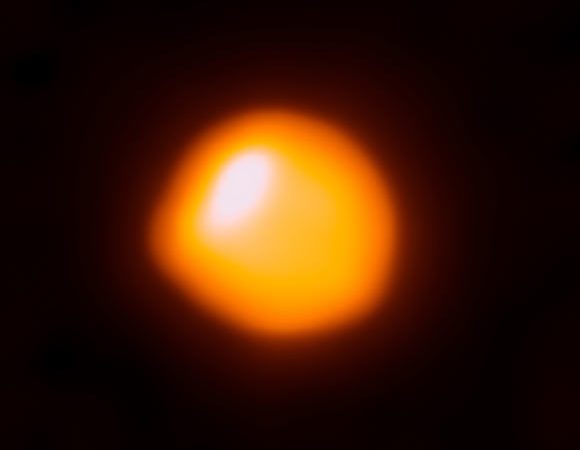Using new observational data from the space-based Solar Mass Ejection Imager and three different modeling techniques, astronomers have found that Betelgeuse, a red supergiant in the constellation of Orion, has a radius of about 764 solar radii, a mass between 16.5 and 19 solar masses, and is 548 light-years away.
Source: Sci News
“Betelgeuse has long fascinated scientists. But lately, it’s been behaving strangely,” said Dr. Meridith Joyce, an astronomer in the Research School of Astronomy and Astrophysics at the Australian National University and the ARC Centre of Excellence for All Sky Astrophysics in 3 Dimensions (ASTRO 3D).
“It’s normally one of the brightest stars in the sky, but we’ve observed two drops in the brightness of Betelgeuse since late 2019.”
“This prompted speculation it could be about to explode. But our study offers a different explanation.”
“We know the first dimming event involved a dust cloud. We found the second smaller event was likely due to the pulsations of the star.”
Dr. Joyce and colleagues were able to use hydrodynamic and seismic modeling to learn more about the physics driving the pulsations of Betelgeuse and get a clearer idea of what phase of its life this red supergiant is in.
“Our analysis confirmed that pressure waves — essentially, sound waves-were the cause of Betelgeuse’s pulsation,” said Dr. Shing-Chi Leung, an astronomer in the Walter Burke Institute for Theoretical Physics at Caltech.
“It’s burning helium in its core at the moment, which means it’s nowhere near exploding,” Dr. Joyce said.
“We could be looking at around 100,000 years before an explosion happens.”
“We also revealed how big Betelgeuse is, and its distance from Earth,” added Dr. László Molnár, an astronomer with the Konkoly Observatory.
“The actual physical size of Betelgeuse has been a bit of a mystery — earlier studies suggested it could be bigger than the orbit of Jupiter.”
“Our results say Betelgeuse only extends out to two thirds of that, with a radius 764 times the radius of the Sun.”
“Once we had the physical size of the star, we were able to determine the distance from Earth,” he said.
“Our results show it is 548 light-years from us — 25% closer than previous thought.”
The good news is Betelgeuse is still too far from Earth for the eventual explosion to have significant impact here.
“It’s still a really big deal when a supernova goes off. And this is our closest candidate. It gives us a rare opportunity to study what happens to stars like this before they explode,” Dr. Joyce said.
The findings were published in the Astrophysical Journal.
Source: Sci News

































Leave a Comment
You must be logged in to post a comment.